I'll try to add a more intuitive understanding of why they derived the equation in the form they did. First, I agree with the previous comment (and your intuition) about taking the limit of R as it approaches infinity. $$\lim_{\mathscr{R} \to \infty}\frac{g}{1+ \mathscr{R}} + {d} = d$$
But, they purposely defined and isolated the term $${A_\infty} = \frac{g}{\mathscr{R}} + {d}$$ to get it in the following form
$${A} = {A_\infty}\frac{\mathscr{R}}{1+ \mathscr{R}} + \frac{d}{1+ \mathscr{R}}$$ We can see that if we let the return ratio, R go to infinity, we are just left with $$A = A_\infty$$.
Now about the intuition, there is a similar form shown under the asymptotic gain model, which expresses gain of negative feedback amplifiers as the asymptotic gain relation. $${G} = {G_\infty}\frac{{T}}{1+ {T}} + {G_o}\frac{1}{1+ {T}}$$ Notice, this is the same form shown earlier, just using different variables. T here is the return ratio (R), G is gain (A) at asymptotic infinite return ratio (Ginf), and when return ratio is zero (G0). I'm going to suggest (as previous poster alluded to) that we ignore the direct transmission term on the right as that represents the feedforward portion of the network we are modeling. Not only do most EE texts usually not cover this feedforward part, but the important part in circuit design is the feedback portion. So,$${G} = {G_\infty}\frac{{T}}{1+ {T}}$$
Now we can use some of the definitions shown on wiki, of the classical feedback theory. The most important (feedback) equation you will use in circuits is $${A_{FB}} = \frac{A}{1+B_{FB}{A}}$$
This well known form expresses gain as a function of open loop gain and closed loop feedback terms. If the open loop gain, A, is infinite then the closed loop feedback will be precisely 1/Bfb as desired.
Using the expressions, for Ginf, and T, we see
$${{B_{FB}} = {B} = \frac{1}{G_\infty}}$$ and $${{A} = {G_\infty T}}$$
This translates the form G and T to the form with AFB and A. And you can just think of T (return ratio) as AB, known as the loop gain. Ginf is just 1/Bfb or the inverse of the closed loop gain.
We can further use the form $${A_{FB}} = {A_{CL}} = \frac{1}{B}\frac{1}{\frac{1}{AB} +1 }$$ Note, this is the final form they led you to (A) and the feedback portion of the classical feedback equation (G).
The importance of this equation and form is that if the open loop gain (A) and hence loop gain (AB) is very large, the closed loop gain just becomes the term on the left or 1/B. This is why op amps are usually designed with very large open loop gain, so that the closed loop gain is accurate with very small errors.
Leaving it in the form $${A} = {A_\infty}\frac{\mathscr{R}}{1+ \mathscr{R}} = {A_\infty}$$ (and ignoring d, feedforward term) is equivalent to having the classical form -
$${A} = A_{CL} = {\frac{A}{AB}}{\frac{AB}{1 + AB}} = {1/B}$$
(with loop gain, AB, and transmission ratio R, approaching infinity).
It should be clear why this form is useful as it expresses asymptotic closed loop gain as a function of open loop gain (which is ideally infinite).
And notice if the AB term was by itself as one single variable (as in the original author's R term) the whole term would go to zero, just as in your original question. The important part is breaking out g/R and A/T into A/AB so the As cancel and 1/B is the clear feedback gain.
